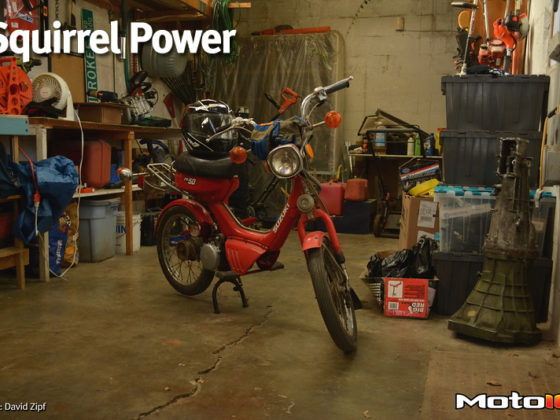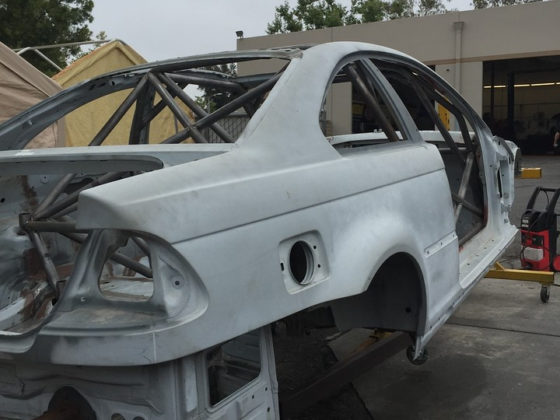
Wrench Tip: Get a Jewelry Cleaner
Cleaning small parts can be a real hassle. If you’re rebuilding, say, a carburetor, with lots of little jets, needles, and pins and screws, it can be very easy to break or lose something. Some parts refuse to come clean, even when scrubbed with strong solvents (brake calipers are a great example of this). So what’s a car guy to do?
 The first engine I ever rebuilt was a 0.15cc nitromethane engine for an R/C car. The piston is smaller in diameter than a dime. Getting everything nice and clean is very hard, especially inside the cylinder since there’s no room for a brush. I picked up this little ultrasonic jewelry cleaner for $20 10 years ago and it has served me well ever since. I got it at Big Lots, but have not seen them in many years. Harbor Freight has two available, a pint size like mine, and a much larger 2.5L cleaner, which is what I would go for today. For a solvent, I use denatured alcohol as it is not corrosive to plastics and cheap to get a hold of. A bit of degreaser like Simple Green can also help with extra greasy or oily parts.
The first engine I ever rebuilt was a 0.15cc nitromethane engine for an R/C car. The piston is smaller in diameter than a dime. Getting everything nice and clean is very hard, especially inside the cylinder since there’s no room for a brush. I picked up this little ultrasonic jewelry cleaner for $20 10 years ago and it has served me well ever since. I got it at Big Lots, but have not seen them in many years. Harbor Freight has two available, a pint size like mine, and a much larger 2.5L cleaner, which is what I would go for today. For a solvent, I use denatured alcohol as it is not corrosive to plastics and cheap to get a hold of. A bit of degreaser like Simple Green can also help with extra greasy or oily parts. Carburetors that have sat for a long time will get varnish and mildew inside of them. Two stroke carbs will also get oil buildup. This was the float bowl of an old carb after we gave it a hose down with carb cleaner and a scrub with a toothbrush. This carb had been sitting on an old 2-stroke moped for nearly a decade before we bought it and the carb was a full of old oil and fuel scum. Still pretty gross and it’s impossible to get into the corners because of the size. If this debris breaks off, it will clog our tiny fuel jets, rendering our moped useless.
Carburetors that have sat for a long time will get varnish and mildew inside of them. Two stroke carbs will also get oil buildup. This was the float bowl of an old carb after we gave it a hose down with carb cleaner and a scrub with a toothbrush. This carb had been sitting on an old 2-stroke moped for nearly a decade before we bought it and the carb was a full of old oil and fuel scum. Still pretty gross and it’s impossible to get into the corners because of the size. If this debris breaks off, it will clog our tiny fuel jets, rendering our moped useless. The one pint cleaner just barely fits the carb. We had to do a second pass with all the small parts (jets, float, needle and seat). For these parts I use an old yogurt container to drop everything in, then fill it with alcohol. The vibrations from the cleaner still do their job, but you don’t have to fish through the muck to find your parts later. Fire up the cleaner and on really gross parts you can literally watch the dirt melt away.
The one pint cleaner just barely fits the carb. We had to do a second pass with all the small parts (jets, float, needle and seat). For these parts I use an old yogurt container to drop everything in, then fill it with alcohol. The vibrations from the cleaner still do their job, but you don’t have to fish through the muck to find your parts later. Fire up the cleaner and on really gross parts you can literally watch the dirt melt away. After drying, this is our float bowl. Massive improvement. There’s still some really baked on gunk in the corners, but most of the hard work has been done by the cleaner. The rest of the old varnish and corrosion came off a lot easier after the carb went through our jewelry cleaner.
After drying, this is our float bowl. Massive improvement. There’s still some really baked on gunk in the corners, but most of the hard work has been done by the cleaner. The rest of the old varnish and corrosion came off a lot easier after the carb went through our jewelry cleaner. And here is all the debris leftover. If you’re really cheap, you can actually strain and save the dirty alcohol and reuse it. On top of this carb, and R/C parts, I’ve also used this cleaner to clean and rebuild brake calipers for SAE cars. Rebuilding a leaking caliper saves a ton of money (the seals were about $5, while a new caliper is $100+) and after the tiny caliper bodies took a dunk and shake, they looked brand new.
And here is all the debris leftover. If you’re really cheap, you can actually strain and save the dirty alcohol and reuse it. On top of this carb, and R/C parts, I’ve also used this cleaner to clean and rebuild brake calipers for SAE cars. Rebuilding a leaking caliper saves a ton of money (the seals were about $5, while a new caliper is $100+) and after the tiny caliper bodies took a dunk and shake, they looked brand new. If you buy a larger cleaner, you can clean things like pistons, connecting rods, and other assorted engine parts. KW Suspensions and Cosworth both use ultrasonic cleaning in their production (though their machines are a lot more powerful and expensive and include heating elements for a truly deep clean), so if you need to clean small, delicate, or complex parts, ultrasonic cleaning is the way to go.



